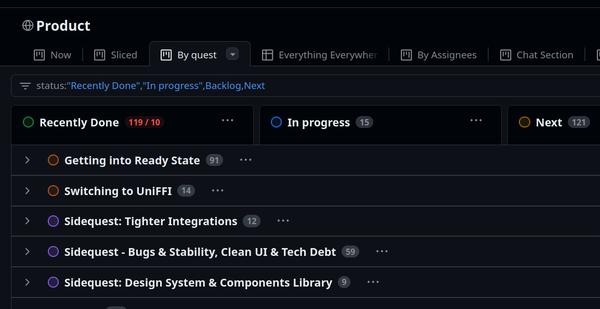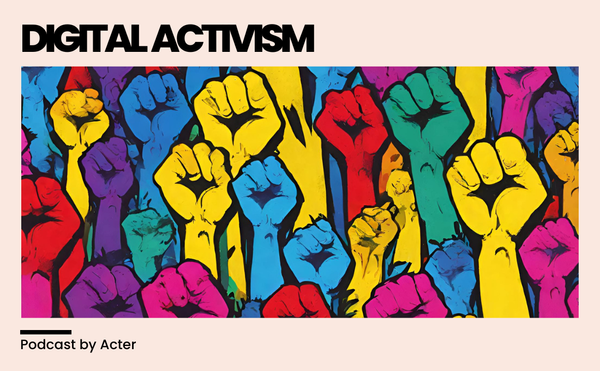Building Your Activism Muscle: Why and How to Boost Your Capacity for Change

Hey, change-makers! 🌍✊
Ever wonder how some activists seem to have an endless supply of energy, resources, and ideas to keep pushing for what they believe in? It’s like they’ve got a secret stash of activist superpowers, right? Well, sort of. It’s called capacity building and it’s not as mysterious as it sounds. Inspired by our recent chat with Joppe from the Activist Handbook, we’re diving deep into what capacity building is, why it’s crucial for your activism journey, and how you can get in on this action.
What is Capacity Building Anyway?
Capacity building in activism is like hitting the gym for your cause. 🏋️♂️
It’s all about strengthening the skills, resources, and strategies of individuals and groups to achieve their activist goals more effectively. Imagine upgrading your activism toolkit so you’re ready for anything the world throws at you.
Why Should You Care?
1. Greater Impact: You’re setting yourself up to make a bigger splash by beefing up your abilities and resources. Think quality AND quantity.
2. Sustainability: Burnout is real, folks. Capacity building helps you and your movement keep going strong without fizzling out.
3. Adaptability: Change is the only constant. Building your capacity means you’re better equipped to pivot and tackle new challenges as they come.
How to Build Your Activism Muscle
Let’s get into the how-to. Building capacity isn’t a one-size-fits-all process, but there are some core areas you can focus on to get started.
1. Skill Up
Learning never stops, especially in activism. From public speaking and digital marketing to legal knowledge and event planning, there’s always something new to master.
- Workshops and Webinars: Keep an eye out for these. They’re goldmines for learning from those who’ve been in your shoes.
- Online Courses: Platforms like Coursera and Udemy offer courses on relevant topics of which many are free.
- Peer Learning: Sometimes, your fellow activists are your best teachers. Share skills and experiences with each other.
2. Network Like a Boss
In the world of activism, who you know can be just as important as what you know. Networking builds relationships that can provide support, resources, and collaboration opportunities.
- Attend Events: Conferences, meetups, and protests are great places to meet like-minded individuals.
- Use Social Media: LinkedIn, Twitter, and Instagram can connect you with activists worldwide. Don’t be shy; reach out!
- Create or Join a Collective: There’s strength in numbers. Collaborating with others can amplify your efforts and provide a support system.
3. Resource Mobilization
Money, volunteers, and information are the lifeblood of any campaign. Learning how to gather and manage these resources effectively can be a game-changer.
- Fundraising: Explore different methods, from crowdfunding to grant writing. Be transparent about how funds will be used to build trust with your supporters.
- Volunteer Recruitment: A passionate volunteer team can do wonders. Offer clear roles and express appreciation for their efforts to keep them engaged.
- Data Management: Keep track of your resources, contacts, and progress. Tools like Google Sheets or more sophisticated CRM systems can help you stay organized.
4. Digital Savvy
In today’s world, being tech-savvy is non-negotiable. Whether it’s managing a social media campaign or protecting your privacy online, digital skills are crucial.
- Social Media Mastery: Beyond posting, understanding analytics, targeted advertising, and engaging content creation.
- Privacy and Security: Learn about encryption, secure communication, and data protection to keep your team and your plans safe.
- Tech Tools: Familiarize yourself with collaboration tools like Slack, project management software like Trello, and other digital tools that can streamline your work.
5. Wellness and Resilience
Activism can be tough on the mind and body. Prioritizing wellness and building resilience ensures you can keep fighting the good fight.
- Self-care: It’s not just bubble baths and yoga. Find what replenishes your energy, whether it’s spending time in nature, journaling, or something else.
- Community Care: Support each other. Check in with your fellow activists, offer help, and know when to step back and let others lead.
- Mental Health Resources: Be aware of the mental health challenges that can come with activism. Seek professional help if needed and encourage your community to do the same.
Wrapping Up
Capacity building in activism is about preparing yourself and your movement to push boundaries, overcome obstacles, and achieve your goals. It’s a continuous process, but every step you take strengthens your ability to make a difference. So, what’s your next step going to be? Remember, every activist started somewhere, and with dedication, learning, and community, there’s no limit to the change you can create.
Let’s keep the conversation going. Have you had an experience with capacity building in your activism work? Share your stories and tips in the comments below or hit us up on our socials. 💪🌈





